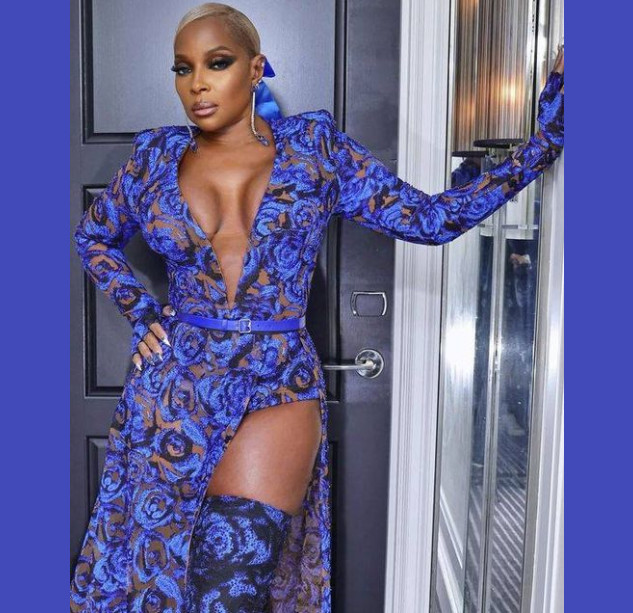Mary J. Blige’s 1994 album “My Life” was a groundbreaking work that helped establish hip hop soul as a major genre. More than that, it was a deeply personal expression of one artist’s struggles that resonated deeply with audiences. However, “My Life” did not become the seminal work it is solely due to Mary J. Blige’s talents – it was very much a collaborative effort between Blige and a team of other key music industry figures. Each member brought their unique skills and perspectives, combining to help Blige craft her raw emotions and experiences into a genre-defining album.
At the center of it all was Mary J. Blige. As the artist, Blige poured her heart and soul into “My Life,” sharing deeply personal details about her battles with addiction, depression, and dysfunctional relationships. Born in 1971 in Bronx, New York, Blige had experienced a difficult upbringing. She was surrounded by substance abuse and domestic violence from a young age. By her early twenties, Blige was struggling with these issues herself. This life experience gave Blige’s vocals an unparalleled raw emotion and sense of authenticity. Listeners could feel her pain coming through in every note she sang.
However, Blige may not have been able to fully translate those personal experiences and emotions into a successful album without the guidance and support of her collaborative team. One of the most influential figures was Sean “Puffy” Combs, who served as the album’s executive producer. In the early 1990s, Combs was a rising star in the music industry, having already found success at Uptown Records. He recognized Blige’s immense talent and potential after seeing her perform. Combs took Blige under his wing, signing her to his new label Bad Boy Records.
As executive producer, Combs played a pivotal role in shaping the overall sound and direction of “My Life.” Coming from a hip hop background, Combs incorporated elements of that genre into R&B to create the signature hip hop soul style of the album. This helped Blige’s raw emotion have more edge and grit. Combs also co-wrote several tracks on “My Life,” helping Blige translate her experiences into lyrics. His production expertise was invaluable to an artist still developing her skills. With Combs’ guidance, Blige was able to fully realize and communicate the anguish in her past.
Another crucial collaborator was producer Chucky Thompson. A veteran of the music industry, Thompson lent his skills to several tracks on “My Life,” co-producing cuts like “You Bring Me Joy” and “I’m Goin’ Down.” Thompson was known for his soulful, sample-based production style from prior work with acts like Run DMC and The Notorious B.I.G. He brought live instrumentation into many of the songs, helping create the lush, soulful soundscapes that provided the perfect backdrop for Blige’s vocals. His experience and musical ear were a major factor in the album achieving its signature blend of hip hop, soul, and raw emotion.
Songwriting was also a collaborative effort that contributed greatly to “My Life.” While Blige poured her heart into the lyrics, she worked closely with other writers to craft them. One of the most impactful was Arlene DelValle, who co-wrote some of the album’s standout tracks including “Real Love” and the title track “My Life.” DelValle helped Blige translate her personal experiences into relatable lyrics that touched on universal themes of heartbreak, addiction, and survival. Her skills as a songwriter were integral to communicating Blige’s story in a way that resonated so strongly with audiences.
In addition to the core collaborators of Combs, Thompson, and DelValle, there were many other behind-the-scenes contributors to “My Life.” Session musicians brought Blige’s vision to life, laying down live instrumentation to enhance the soulful production. Engineers finessed the sonics to achieve the album’s raw yet polished sound. Other writers, vocal producers, and A&R professionals all lent their skills. Even Blige’s background singers, like fellow Bronx native Tammy Ruggeri provided support. It took this village of talented musical artisans to help craft Blige’s emotionally charged story into a cohesive, genre-bending album.
Upon its June 1994 release, “My Life” was an immediate commercial success. It debuted at #1 on the Billboard R&B albums chart and was eventually certified platinum. But more importantly, it was a critical triumph that cemented Blige as the “Queen of Hip Hop Soul.” Her searingly honest vocals connected with audiences around the world who related to her struggles. At the same time, critics praised the album’s innovative fusion of hip hop and soul. “My Life” demonstrated that hip hop could be used as a vehicle for emotional expression. It helped establish the burgeoning hip hop soul genre and proved there was an audience for raw, autobiographical black female perspectives in music.
Nearly 30 years later, “My Life” remains one of Blige’s most iconic works. It has been inducted into the Grammy Hall of Fame for its cultural and historic significance. The album also had a profound influence on R&B and hip hop in the following decades, as countless artists have cited it as inspiration. However, it was not just Mary J. Blige’s talent alone that created such an enduring work – it took a collaborative effort between Blige and her team of skilled music industry partners. Each member, from Sean “Puffy” Combs and Chucky Thompson to Arlene DelValle and more, played an integral role in helping Blige translate her personal experiences into a genre-defining album. Together, they demonstrated the power of collaboration to produce art that resonates across generations. “My Life” stands as a testament to what can be achieved when talented individuals come together towards a shared creative vision.



